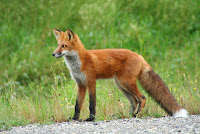with Donald F. Smith, Cornell University
Posted November 28, 2012
As veterinarians watched the election returns on November 6th, most eyes were on the top of the ticket or on specific congressional, state or local races. However, something else was happening as the election of women to Congress reached historic proportions. For the first time, the Senate will have 20 women (an increase of three), and the House of Representatives will reach 17% women.
 |
| Julie Kumble, guest author |
Only delegates (not alternates) can vote within the HOD, and their votes are weighted proportionate to the population of their respective states. For example, California has 47 weighted votes and Texas has 41. At the other end of the population scale, Wyoming and Vermont have four and five weighed votes, respectively. The allied groups each have two weighted votes.
This graph shows the gender proportions in the newly-elected 113th Congress compared to the 2012-13 HOD. We further segmented the data in the first two columns for those HOD delegates and alternates who are state representatives (104 total) from the total number of delegates and alternates that includes those representing other organizations (134 total).
 |
Percentages of Women and Men in the 113th US Congress and in the AVMA's House of Delgates |
The proportions of women in the HOD and in Congress are entirely consistent with other sectors, from academia to business to politics, where women hold only an average of 18% of the top leadership positions. However, women earn 57% of college degrees, with most of the gains above 50% being achieved in the last decade. Women have been more numerous that men in veterinary colleges since the early 1980s, and have earned over 80% of veterinary degrees for almost 20 years.
The following graph shows the relative age distribution of delegates and alternate delegates for the HOD, using graduating year as an rough proxy for age. The mean year-of-graduation for each cohort is shown on the y-axis. For example, the mean year-of-graduation for all HOD delegates is 1979 (33 years ago). For women, the mean year-of-graduation is 26 years ago (1986). Male delegates on the other hand are older, with their mean year of graduation being 35 years ago (1977).
Not surprisingly, the alternates who represent the more recently-appointed HOD members are more likely to be younger. That age difference is seen in men as well as women.
Not surprisingly, the alternates who represent the more recently-appointed HOD members are more likely to be younger. That age difference is seen in men as well as women.
 |
| Distribution of House of AVMA's House of Delegates by Year of Graduation |
 |
| Karen Bradley, DVM Delegate and Chair, House Advisory Committee |
She comments: "How states and allied groups identify HOD members varies greatly. Some states have many people waiting in line for their turn as a delegate, and others have to seek out people for the position. Some states even have a formal election from their membership. Though the Manual of the House of Delegates states that the term for delegates and alternates is four years, there is no limit to the number of terms imposed by the Bylaws nor the Manual. Without term limits, delegates can remain in office for decades.
"I am very fortunate to be in Vermont Vermont Vermont Vermont
Looking ahead and considering the changing demographics in our profession, we will do well to encourage more women to run as delegates, to mentor younger female veterinarians and encourage them to take on leadership roles, and to serve as role model to other professions by striving to achieve and surpass the critical mass point of 30% in the House of Delegates.
Dr. Smith invites comments at dfs6@cornell.edu
Easthampton, Massachusetts 01027. She can be reached at juliek@womensfund.net.
Photo credits:
Julie Kumble's photo provided by Women's Fund of Western Massachusetts
Karen Bradley's photo provided by the American Veterinary Medical Association
Photo credits:
Julie Kumble's photo provided by Women's Fund of Western Massachusetts
Karen Bradley's photo provided by the American Veterinary Medical Association


























